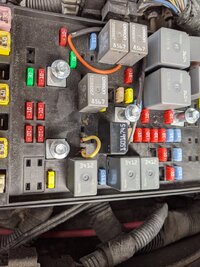Disengaged would be the default no power applied condition on a working clutch so no PCM is required. If you applied full power to it and it still doesn't engage, it's toast.
You say ypours completely stops with the engine running? That is practically impossible unless something is rubbing on the fan. There is always some friction that will make the fan turn a bit. either way, yours is definitely done.
You say ypours completely stops with the engine running? That is practically impossible unless something is rubbing on the fan. There is always some friction that will make the fan turn a bit. either way, yours is definitely done.







